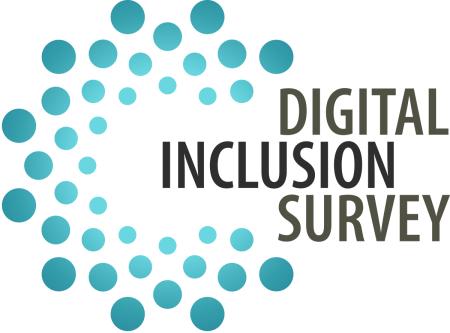2014 Digital Inclusion Survey: Expanding Library Impact on Digital Divide
 Does your community know the incredible role your library plays in bridging the digital divide and advancing digital inclusion? Do they understand the difference between the existing digital divide and the value of achieving digital inclusion? The recently released 2014 Digital Inclusion Survey provides data that can help you put your story in the national context.
Does your community know the incredible role your library plays in bridging the digital divide and advancing digital inclusion? Do they understand the difference between the existing digital divide and the value of achieving digital inclusion? The recently released 2014 Digital Inclusion Survey provides data that can help you put your story in the national context.
The 2014 Survey illustrates how public libraries are continuing to bridge the digital divide for the 30% of American households lacking broadband. In rural communities, this number increases to 38% and for homes with incomes under $25,000 it increases to 52%. Free public access to Internet-enabled workstations is a vital lifeline to individuals living in these households and one that virtually every public library in the U.S. offers.
Providing access to the Internet is the way in which libraries help bridge the digital divide. However, to quote Vincent Tinto, “Access without support is not opportunity.” The Survey shows how libraries provide far more than access; they provide individuals with the digital literacy skills needed to participate in modern society. This support is visible in the 89.9% of libraries that help patrons with basic Internet skills and the 86.9% that offer assistance with basic computer skills. Further, public libraries support digital inclusion by providing programs and e-content that address the most pressing community needs. Here are just a few examples the Survey identifies,
- Education and Learning: 91.9% of libraries offer Science, Technology, Engineering, Arts, and Math (STEAM) programming.
- Economy and Workforce Development: 62.3% of libraries offer access to subscription-based job training Websites.
- Health and Wellness: 56.2% of public libraries offer access to subscription-based online health databases.
The 2014 Survey also describes and quantifies how the physical infrastructure of libraries may inhibit their capacity to promote digital inclusion. Specifically, it notes a number of instances where libraries that have been renovated in the last five years appear to have a greater likelihood to foster and support digital inclusion and readiness than those that have not been renovated. For example, 71.1% of recently renovated libraries provided programs on identifying health insurance resources, as compared to 56.8% of libraries that were not recently renovated.
There are two clear messages embedded in the 2014 Digital Inclusion Survey. The first is that public libraries persist as relevant community anchors and exist as vital conduits of digital inclusion. These roles are key in helping to ensure every individual can participate and succeed in the digital age. The second is that public libraries need external support to ensure they have the physical infrastructure to persist as vital conduits of digital inclusion.
More information regarding the study and survey, including examples of data use, interactive data tools to understand state and local-level details, infographics, and issue briefs regarding public libraries and aspects of digital inclusion, is available at http://digitalinclusion.umd.edu.
